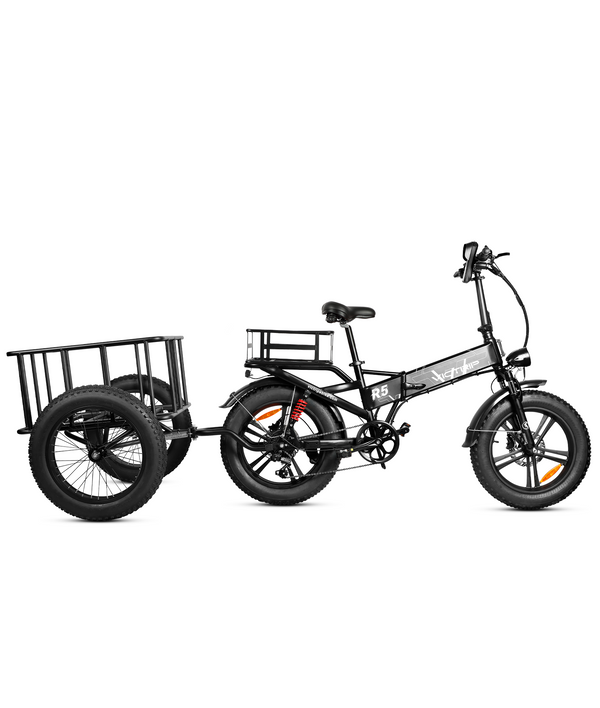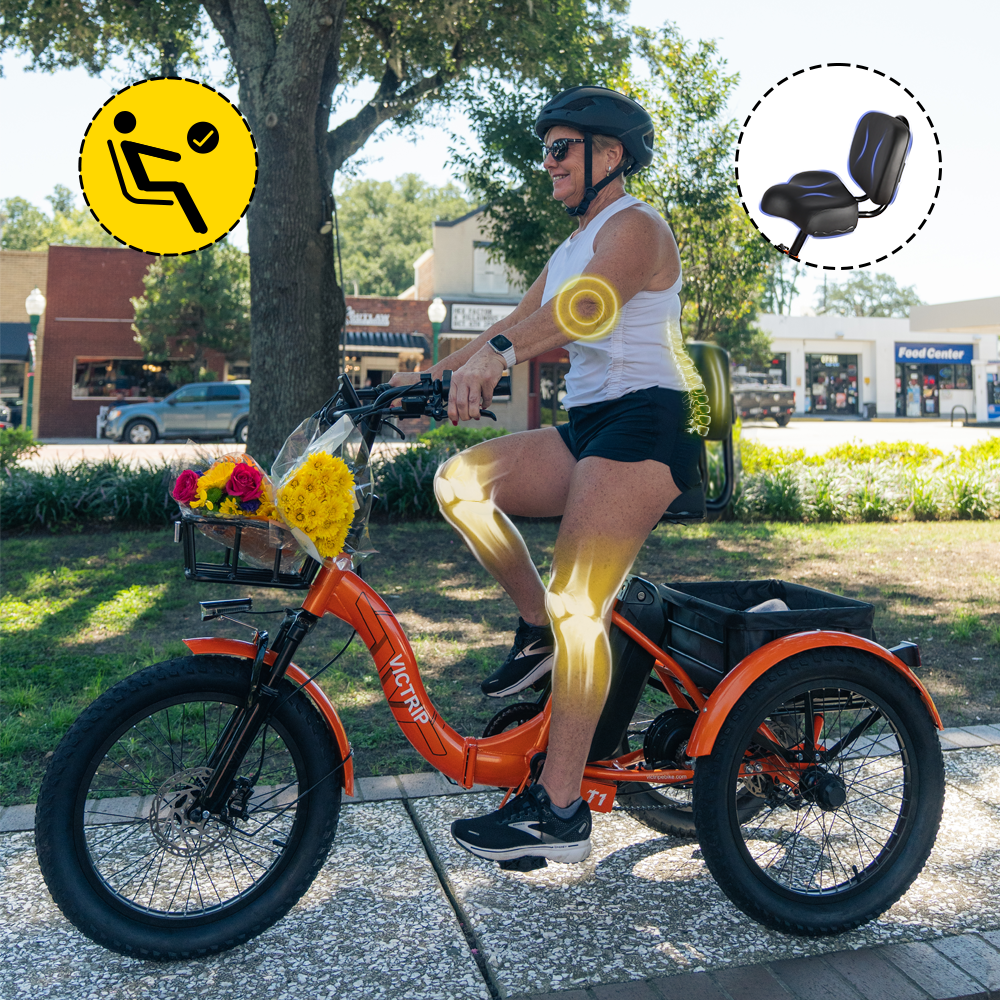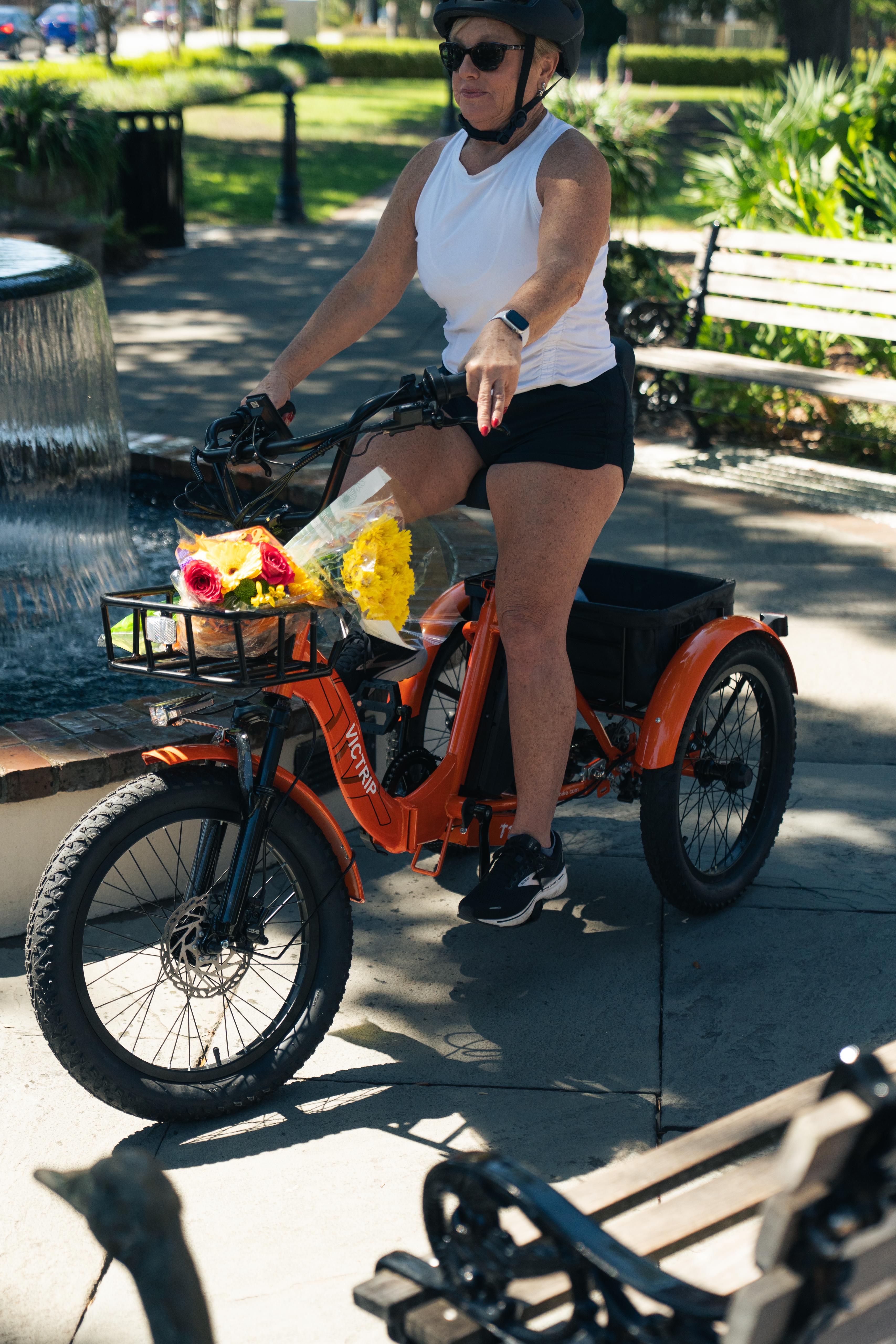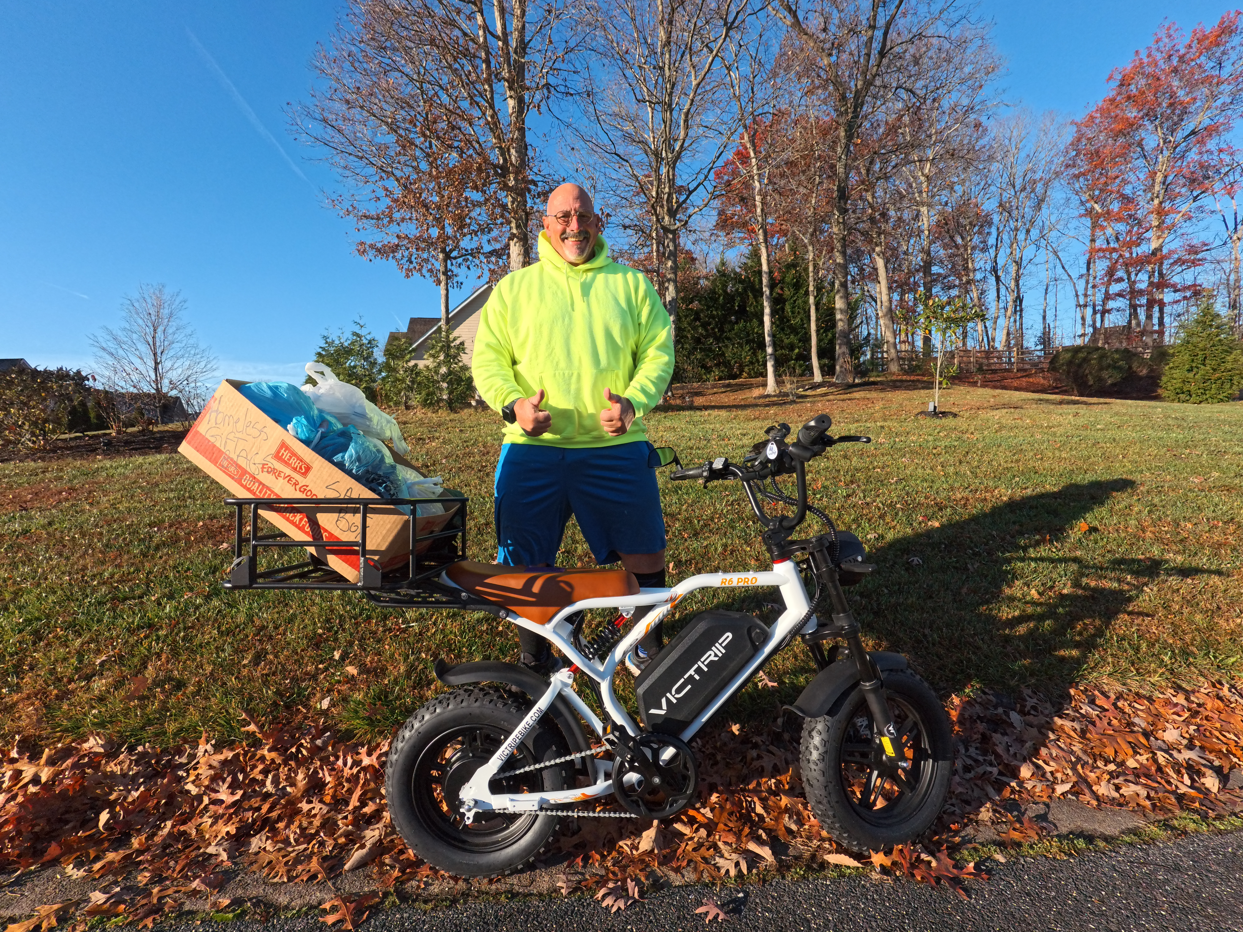Choosing the right trailer for your ebike can change a ride from clumsy and nerve-wracking to smooth and reliable. Right up front, know this: Single-Wheel and Dual-Wheel Ebike Trailers behave differently, and the better you match the trailer to your riding style, the happier you'll be. This guide breaks down the differences, lays out advantages and trade-offs, and gives ten practical tips to make the right pick.
Understanding Ebike Trailers
Ebike trailers attach to the back of your electric bike and let you carry cargo, pets, or kids without strapping everything to your rack or backpack. They come in many shapes, but two broad categories dominate: single-wheel and dual-wheel trailers. Both let you transport stuff, but they differ in stability, maneuverability, speed handling, and packing style.
If you’re exploring practical, high-quality designs built for modern electric bikes, check out the VICTRIP Ebike Trailer — a versatile, durable option engineered for both urban and adventure riders.

What is a Single-Wheel Ebike Trailer?
A single-wheel trailer has one central wheel or pair of close-set wheels under a narrow chassis. It's meant to follow the bike closely, especially on twisty paths. Because the trailer tracks behind the bike, it’s very nimble and often preferred for narrow trails and urban streets where you need sharp turning capability.
What is a Dual-Wheel Ebike Trailer?
A dual-wheel trailer has two wheels spaced wider apart and a broader frame. It looks more like a tiny cart. Dual-wheel trailers excel at steady rides, heavy loads, and carrying passengers or enclosed cargo (like child seats or pet pods). They’re steadier when stopped and less twitchy at low speeds.
Advantages of Single Wheel Ebike Trailers
Single-wheel trailers are designed to ride tucked closely behind the rear wheel of your bike. Because they're narrow and centered, they act like an extension of the bike rather than a wide trailer that changes handling dramatically. That design makes single-wheel trailers excellent for riders who value agility and want to keep close contact with the bike’s steering feel.
Maneuverability and Trail Performance
One of the single-wheel trailer’s biggest boons is its ability to handle tight turns and narrow trails. When you’re commuting on bike lanes with parked cars and potholes, or when you’re threading through singletrack on an adventure day, a single-wheel trailer will track nearly in the bike’s line. That means less worry about the trailer catching curbs or clipping sidewalk furniture.
Because the trailer sits in the bike’s draft, it tends to follow the exact path you’re taking. So if you make a tight turn, the trailer turns almost the same way — no more wide arcs. Riders who ride technical trails or busy city streets often prefer this feel because it reduces surprises and lets them use their usual riding technique.
Weight, Packing, and Portability
Single-wheel trailers are typically lighter and simpler. The single-wheel design lets manufacturers keep frames compact and minimize extra hardware. That reduces the total weight you’re dragging and makes the trailer easier to store. If you need something to toss in the trunk or to carry occasionally, single-wheel trailers generally fold down smaller and are easier to lift.
Packing is different too: single-wheel trailers usually work best for longer, narrower loads. Think duffel bags, fishing gear, or a couple of grocery bags. Because the trailer’s cross-section is narrow, big bulky boxes may not fit as well as they do in wider dual-wheel carts.
Simpler Hitching and Fewer Parts
A narrow design also means fewer points of failure. With less hardware on the frame, there are fewer bearings and fewer things to loosen or break. Hitch systems for single-wheel trailers aim to be low-profile and often attach near the rear axle. That keeps the trailer connected tightly — and many riders report less wobble at speed.
When Single-Wheel Trailers Are Less Ideal
It’s only fair to say single-wheel trailers do have limits. They’re not as stable when stopped; they can tip more easily if you lean the loaded trailer on its side. And big loads that shift side to side will make the trailer feel squirrely. If you plan to carry kids, heavy crates, or anything that needs a wide base, you might worry about tipping — that’s one reason many child trailers use dual wheels or wide bases.
Advantages of Dual-Wheel Ebike Trailers
Dual-wheel trailers are the “workhorse” option. A dual-wheel trailer spreads its load across a broader platform and two wheels. That simple change brings several clear benefits: stability at low and stopped speeds, larger cargo space, and the ability to carry specialized enclosures (like child capsules). If you’ve ever used a stroller or a wagon, you'll get the dual-wheel trailer’s basic feel: solid, predictable, and a little less sporty.
If you want a balanced, road-ready example that handles both urban errands and countryside rides, the VICTRIP Ebike Trailer is an excellent model to consider — combining durable build quality, stable dual-wheel performance, and compatibility with most electric bikes.
TOP PICK

VVICTRIP® Electric Bike Trailer
$499.00
Stability and Safety with Heavy Loads
Stability is the headline advantage of dual-wheel trailers. Because the wheels are wider apart and the load sits on a broader base, they resist tipping. When you stop at an intersection, a dual-wheel trailer stays upright if you need to set it down. If you’re carrying heavy gardening gear, coolers, or a child's seat, that extra balance matters — especially when you’re loading or unloading on uneven ground.
For longer distances and highway-style bike lanes where speed is higher, a dual-wheel trailer can feel steadier. It resists side winds better because the wider footprint spreads the lateral force. For families who want to tow children or pets, manufacturers typically build reinforced frames and secure harness points into dual-wheel models. That makes them safer when compared to narrow single-wheel setups.
Child-Carrying and Cargo Options
Many child trailers you see at parks are dual-wheel. They have room for seats, harnesses, and protective roll cages. That’s not by accident — the broader frame gives space for padding, windows, and weather covers. If your primary use is ferrying kids to school or outings, a dual-wheel trailer tailored for passengers will usually beat a narrow cargo-only trailer.
Dual-wheel trailers also tend to accept more cargo accessories: cargo nets, pannier-like side boxes, and even flat-bed conversions. They can serve as mobile picnic carts or small caravans for camping gear, and many fold down for storage while still providing a wide, stable platform.
Durability and Road Comfort
Because of heavier frames and two wheels sharing the load, dual-wheel trailers generally have better load distribution and less strain on each wheel. You’re less likely to blow a tire under weight because the load is shared. Some dual-wheel models also include low-centre-of-gravity designs and even suspension or cushioned mounts for a smoother ride over rough roads.
Maintenance is straightforward but different: there are two wheels to manage, and the wider frame requires a bit more storage space. Still, for riders who want a no-fuss, reliable cargo platform that can take a beating, dual-wheel trailers are often the smart buy.
When Dual-Wheel Trailers Are Less Ideal
If your routes include a lot of curvy singletrack or tight city maneuvers, the wide stance of a dual-wheel trailer can be limiting. It needs more room to pass objects and may catch on tight corners. Also, they’re usually heavier, which can reduce battery life on an ebike if you’re hauling big loads frequently.
Choosing the Right Trailer Based on Your Needs
Now that we’ve explored both types in depth, let’s match trailer style to use case.
Commuting and City Use
-
If you mostly ride city streets and need to duck around traffic or park quickly, a single-wheel trailer is often better — it follows the bike closely and keeps your lane usage tight.
-
If you carry groceries, larger boxes, or want a stable platform at intersections, a dual-wheel trailer will be less stressful.

Off-Road and Adventure Riding
-
Single-wheel trailers win on technical trails and narrow paths because they’re nimble and less likely to snag obstacles.
-
For mixed-surface touring with lots of gear (tent, stove, clothes), dual-wheel trailers are great at steadying heavy, bulky loads over longer miles.
Child Transport and Pets
-
Choose dual-wheel if you're carrying children or pets. They typically have certified harnesses, enclosure options, and a much lower chance of tipping.
-
Single-wheel trailers are less common for passengers due to the narrower base.
Load Type and Frequency
-
For frequent heavy hauling, dual-wheel trailers last longer without wearing out components.
-
For occasional, lighter loads where portability matters, single-wheel trailers are easier to stow and carry.
Trailer Attachment and Ebike Compatibility
Compatibility matters. The right hitch and fit keep your trailer secure and predictable.
Hitch Types: Axle, Seatpost, Frame
-
Axle Hitch: Attaches near the bike’s rear axle. Strong and low-profile; many single-wheel trailers use this.
-
Seatpost Hitch: Clamps to the seatpost. Quick to fit, but can add leverage and stress; not ideal for heavy loads.
-
Frame Hitch: Bolts to the bike’s rear frame. Very secure but may need tools to fit.
Before buying, check your ebike’s axle type, rear hub spacing, and whether the manufacturer allows attachments. Some ebikes with rear suspension or internal gearing require specific hitch designs.
Balance and Weight Distribution Tips
-
Keep heavy items low and near the trailer axle to avoid raising the center of gravity.
-
Use straps to secure shifting items — a bag that slides will make handling unpredictable.
-
For child trailers, always use the harness and put heavier items (like a cooler) on the trailer floor, not hanging off the sides.
Safety Considerations
Trailers change stopping distance, balance, and braking behavior. Here’s what to watch.
Lights, Flags, and Reflectors
Visibility matters. Attach a tall safety flag, use battery lights on the trailer, and add reflectors on the rear and sides. At night, both trailer and bike should have lights — the trailer’s own light prevents its silhouette from disappearing behind the bike.
Braking and Ebike Power
Trailers add mass. On an ebike, you may notice longer stopping distances. If you carry heavy loads often, consider a trailer with an integrated braking system or plan routes with gentle descents. Practice emergency stops in a safe area to get a feel for the combined stopping power.
Hitch Check Routine
Before every ride, check the hitch, quick-release bolts, and safety strap. A simple pre-ride check reduces the chance of a hitch failure mid-ride.
Maintenance and Longevity
Keep your trailer road-ready with a few routine tasks.
-
Tires: Check pressure before each ride; inspect for cuts or embedded debris.
-
Bearings and Axles: Grease on schedule and adjust if you feel wobble.
-
Frame and Fabric: Rinse salt and mud after rides; treat metal parts to prevent rust.
-
Hitch Points: Inspect bolts and replace worn hardware; safety straps should be intact, not frayed.
Store trailers in a dry spot, off the ground if possible, to avoid tire flat spots.
Budget and Value Considerations
Trailers range from budget-friendly folding carts to premium child capsules with roll cages.
-
Entry-Level: Basic frames, no suspension, lower weight limits. Good if you haul light items occasionally.
-
Mid-Range: Better materials, improved hitches, often collapsible and with more loading options.
-
Premium: Child-ready models, suspension, larger capacities, and better build warranties.
Buy what fits your primary use. Spending on a safer, certified child trailer or higher-quality hitch is usually worth it.
Conclusion
If you want agility and a compact profile for city riding or technical trails, lean toward a single-wheel trailer. It follows the bike closely and keeps your lane small. If you value stability, big capacity, or plan to carry children or pets, choose a dual-wheel trailer — it’s steadier at low speeds and when parked.
Ten practical tips recap:
-
Match trailer type to primary use (commute, cargo, kids).
-
Check hitch compatibility with your ebike.
-
Prefer dual-wheel for kids and heavy loads.
-
Choose single-wheel for tight trails and agility.
-
Practice emergency stops with a loaded trailer.
-
Keep heavy items low and centered.
-
Add proper lighting and a safety flag.
-
Maintain tires, bearings, and hitch regularly.
-
Factor weight & battery range into trip planning.
-
Invest in a trailer rated for your load — safety first.
Pick the trailer that matches most of your rides, not just the occasional one. If you do a mix of city and family outings, many riders keep one versatile dual-wheel trailer for family use and a small single-wheel or light cargo system for solo commutes. Make the choice that reduces stress and keeps the fun in your rides.
FAQs
Do trailers shorten my ebike’s battery range?
Yes, hauling extra weight increases power use. How much depends on load weight, terrain, and riding speed. Expect a noticeable drop in range with heavy loads or steep climbs.
Can I attach a trailer to any ebike?
Not always. Check your ebike’s axle type, frame compatibility, and manufacturer guidance. Rear suspension or non-standard hubs may require special hitch systems.
Is a trailer better than panniers?
It depends. Trailers carry more and are better for bulky or irregular loads; panniers are lower-drag, lighter, and better for daily commuting. For heavy, irregular, or passenger loads, trailers usually win.
How do I prevent the trailer from wobbling at high speed?
Ensure proper hitch installation, balanced load, and secure packing. Avoid high side winds and check tire pressures. If wobble persists, reduce speed and re-check hitch alignment.
Can I convert a single-wheel trailer to a dual-wheel?
Not usually. The frame and hitch design differ. It’s more practical to buy a trailer that fits your intended main use.




Share:
How Electric Trikes Empower People with Mobility Issues
Top Class 3 CBikes Under $2,000 for Commuters